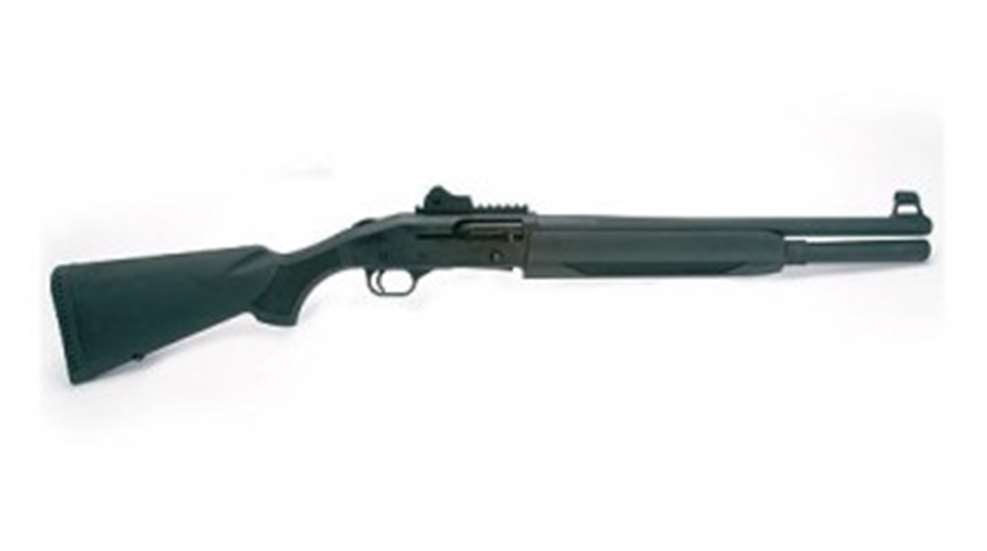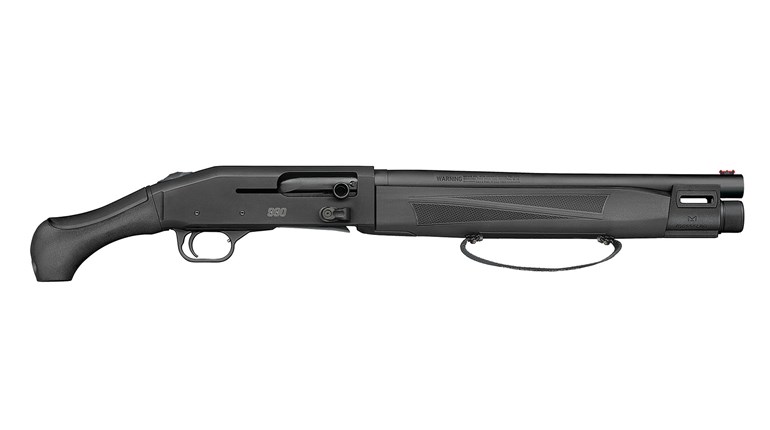
By definition, self-defense firearms must be simple. In a crisis—unless you've practiced and rehearsed a variety of scenarios—the fear factor alone will have you fumbling with trigger-lock keys, dropping a cartridge or short-stroking the action in a feeble attempt to minimize noise. The results could be disastrous for you and your family.
That reality isn't exclusive to civilians either. Some striker-fired handguns have become popular with law enforcement partly because of their simplicity. In a tense, perhaps deadly situation, less is better.
If you prefer a long arm, conventional wisdom has it pump-action shotguns are the best choice for journeymen homeowners. The shuck, shuck sound of a shotshell being chambered is often said to be enough for a criminal to fill his drawers. I saw it work once in grade school, when my gun-fearing mother sent a housebreaker packing by pumping the family's unloaded 16 gauge. I don't know for a fact he needed an underwear change, but he did drop the crowbar in mid-kitchen-door pry, and it remained in our trunk for years—a utilitarian and mobile trophy, of sorts.
But times have changed, and today someone who breaks in probably has been casing your house or the entire neighborhood, so the ruse may not work. Worse yet, drugs could be involved and the perpetrator may not know what he or she is doing, or even care.
Luckily, semi-automatic shotguns that function with nearly the same simplicity as a pump have proven their reliability on the streets and on the front lines. And, they're finding their way into more homes as a primary defense firearm. Mossberg's gas-operated, 930 SPX 12-gauge is one such semi, and its firepower is enough to make even a PCP user stand up and pay attention.
The 930 SPX is Spartan. Its matte-black finish is all business, and it can go relatively unnoticed in a corner, behind a door or underneath the bed. Its polymer stock is ideal for this kind of work, and it's been proven for years in the company's waterfowl-hunting versions of the platform. In other words, don't expect the dust bunnies under your bed or unexpected campsite mud bath to jam the action or do any damage.
The tang-mounted safety is a familiar configuration for most shotgunners. It's at your thumbtip the moment you shoulder the arm, minimizing the risk you'll fumble as you try to find it in the dark. Push forward and you're ready to fire. For daytime use, red shows when in the fire mode. The test gun's safety wasn't as smooth and positive as I've grown accustomed to, though with a little break-in time I'm certain it will remedy itself.
There's no glamour in the sights either. Up front is LPA's M16-style sight, with a red, fiber-optic insert. The business end of any firearm usually takes most of the knocks, which makes the protective wings that rise nearly 1/2 inch on both sides of the fiber-optic element a great addition. The unit is tack welded onto the barrel and is non-adjustable.
Because the rear sight is affixed to a beefy Picatinny rail, the front sight rises 1 1/4 inches above the barrel. It happily survived every bang I subjected it to and the steel wings on the sides shielded the fiber-optic element from damage. The sight's edges are smoothed and angled to preclude hang-ups on fabric, doors or carpet during presentation.
The rear sight, a ghost ring fully adjustable for windage and elevation, is also made by LPA. It too has protective walls on either side, again angled and smoothed to preclude unexpected hang-ups. If you prefer your home-defense shotgun to be topped with an optic or want to adjust the rear sight's position, the receiver-mounted rail makes changing things easy.
The 930 SPX chambers both 2 3/4- and 3-inch 12-gauge shotshells. It can handle non-toxic shot and slugs. Its 18 1/2-inch barrel comes in cylinder bore and is not threaded to accept choke tubes. Magazine capacity is seven. Considering the shotgun's primary function, it's not much of a drawback.
About the only glitzy object on the 930 SPX is the chrome ball that protrudes slightly into the front of the trigger guard when the gun is cocked. In fact, it's the only shiny object I could uncover on the gun until I tore it apart. It too is very intuitive and easy to find in the dark. Simply push your trigger finger forward within the trigger guard, and you'll feel the knob. If a perpetrator comes at you in that instant you're checking the gun's status, there's no trigger-finger relocation necessary—just pull back your finger and you're ready if the threat needs to be handled. When the hammer isn't cocked, the indicator rests completely flush with the trigger guard.
The stock comes to the shoulder naturally and its molded checkering ensures positive purchase, even with wet or sweaty hands. The recoil pad is a little too tacky for my tastes, but it's soft enough to tame 3-inch magnums when combined with the shotgun's gas-operation.
The trigger has some take-up, and the tiny amount of creep is only noticeable if you're working it very slowly. It's fine for a personal-defense shotgun, in fact probably better than most. Let-off weight took me by surprise at 5 pounds even.
The magazine extender may be one of the 930 SPX' few weaknesses. It got slightly bent during testing, either during my drop tests or as the gun participated in a days-long personal defense course. It didn't affect the platform's performance, but because the 7-inch extension underneath the barrel is going to take a significant portion of the brunt during slips or falls, it's worth watching.
Unloading has been made easier too, thanks to the company's EZ-Empty system. By depressing the bolt release, the carrier can be pushed up and the first shotshell in the magazine will come out. Remove that shotshell and simply repeat until the magazine is empty.
Recoil was tolerable with all loads tested and there were no hiccups during my range session or during the extended course beforehand. At 7 yards, using Winchester's 2 3/4-inch Super-X Buckshot Loads, all nine of the 00 pellets stayed in a 4 3/4-inch circle. That's pretty much ideal for home-defense purposes, where shots will be quick, up close and personal. At 20 yards, four of the pellets stayed within the same area, widening of the pattern you'd expect from cylinder bore.
I was also surprised at how tame recoil was when the 930 SPX digested slugs. International's 2 3/4-inch, 325-grain lead-free ammunition yielded a 1 3/4–inch group at 20 yards, offhand. It's not like you'll have time to find a rest in a life or death situation, so testing was kept as realistic as possible. Remington's 3-inch rifled Slugger load, with a 7/8-ounce slug, yielded a 1-inch group.
Mossberg's 930 SPX may not produce that familiar shuck, shuck sound almost guaranteed to make a criminal drop their crowbar and run, but sending the receiver home still has a haunting and reassuring ring. And after some serious time behind the trigger, this shotgun instills the kind of confidence it takes to protect yourself and your family in time of need.





































